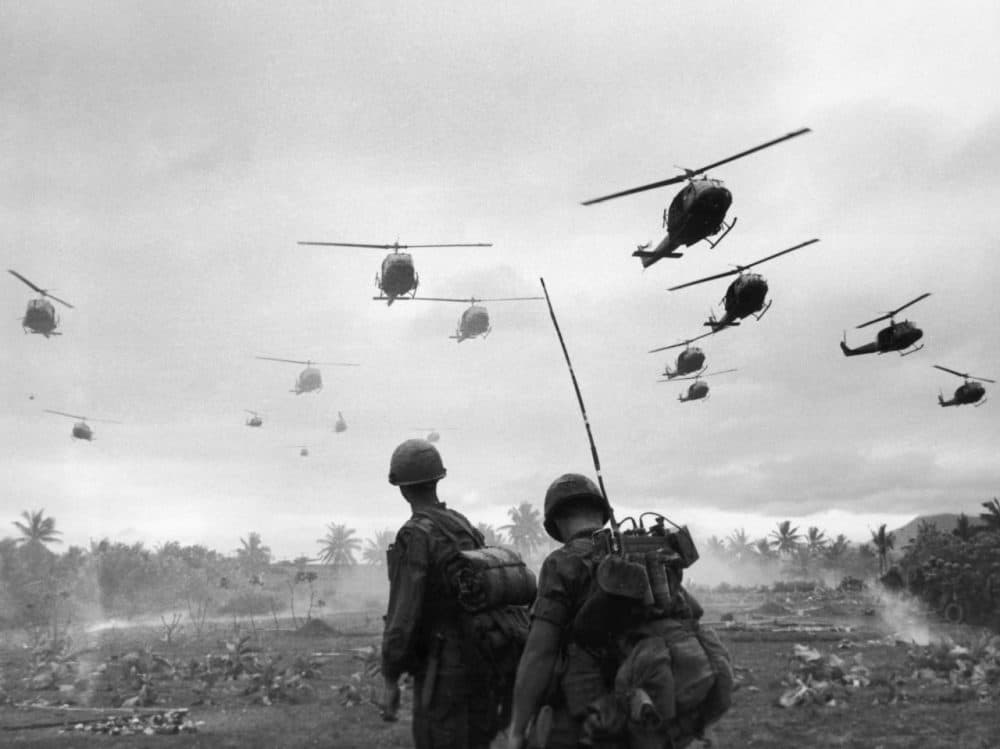Advertisement
Fighting To Get The Story Out In 'Dateline – Saigon'
Resume
The film "Dateline - Saigon" tells the story of five young journalists who struggled to get the truth out about what was going on, and the extent of American involvement, during the early years of the Vietnam War.
The five men profiled in the film would all go on to win Pulitzer Prizes - David Halberstam of the New York Times, UPI’s Neil Sheehan and the Associated Press’s Malcolm Browne, Peter Arnett and Horst Faas.
Tom Herman, producer and director of "Dateline - Saigon," said making this film was "the hardest thing I've ever done." He speaks with Here & Now's Indira Lakshmanan about the reporting these journalists did during the war and the opposition they faced from the U.S. government and soldiers.
Interview Highlights: Tom Herman
On the five journalists featured in the documentary
"The more experienced reporters didn’t want to go there because the war wasn’t going to be very important, people thought."
“David Halberstam was a 29-year-old reporter for the New York Times. He wanted to go to Vietnam, as he says in the film, because he thought that was a ticket to history. These were all young men all on their first big assignments. Peter Arnett was a New Zealand freelancer who had been bouncing around Southeast Asia for a number of years, then got a string with the Associated Press. He joined the office of a fellow named Malcom Browne, the senior citizen of the group at 30, who had come there having been a desk reporter in Baltimore. Neil Sheehan was the youngest of the group in his mid-20s. He had been a reporter for the United Press for just two weeks before he was shipped to Vietnam. And the more experienced reporters didn’t want to go there because the war wasn’t going to be very important, people thought. Each of these five young men went on to win a Pulitzer Prize.”
On difficulties the reporters faced
“In the early years of the war, the reporters were thought to be by the government, thought to act in a role that reporters did in World War II – they’d be on the team. They’d be supporting what the government’s line was. And indeed, in World War II, mostly they were... The expectation they would be on the team, they would toe the line. When these young reporters got there, indeed they were all children of the Cold War. They had all come to the patriotic consciousness during World War II, and they thought they were going to do what Edward R. Murrow and Ernie Pyle and others did in the Second World War, but they then learned – and it took them some time – that the story that was being peddled by the government was not the truth, and then they went out and developed sources and told the story that we know today.”
"They then learned that the story that was being peddled by the government was not the truth, and then they went out and developed sources and told the story that we know today.”
On the beatings the reporters received
“When these reporters went in, there was a real competition. It was the last wire service battle – AP versus UPI. When the going got tough, these competitors had to get together to protect themselves... Peter Arnett, Halberstam, Neil Sheehan, Malcom Browne went to a demonstration. The Saigon government’s secret police didn’t want them taking pictures, didn’t want them there, and they started beating Peter Arnett and other journalists up and Halberstam and Sheehan and the others came to rescue them. That’s just one example that I was able to get into the film of many things like that that happened. For example, President Kennedy called the publisher of The New York Times up and had him come down to the White House. The publisher of The New York Times, Arthur 'Punch' Sulzberger, thought it was just to talk about the kids and the family. But indeed, he asked Sulzberger if he wouldn’t remove Halberstam from Vietnam, which to the New York Times great credit they did not do.”
Were the reporters embittered with the government after Vietnam?
“That’s an interesting question and I think the answer is no. They were all very patriotic young men. They didn’t go over to criticize the war, but they found out that the government was lying and they reported the truth, but they weren’t embittered. They certainly turned against the war and saw that it was wasting American and other lives to no good purpose. But no, I don’t think they were embittered. They were actually quite idealistic and remained that way today for those who are alive, and David Halberstam who was killed a few years ago [in a car accident] was idealistic until the end of his days.”
Guest
- Tom Herman, producer and director of "Dateline - Saigon."
This segment aired on November 30, 2015.